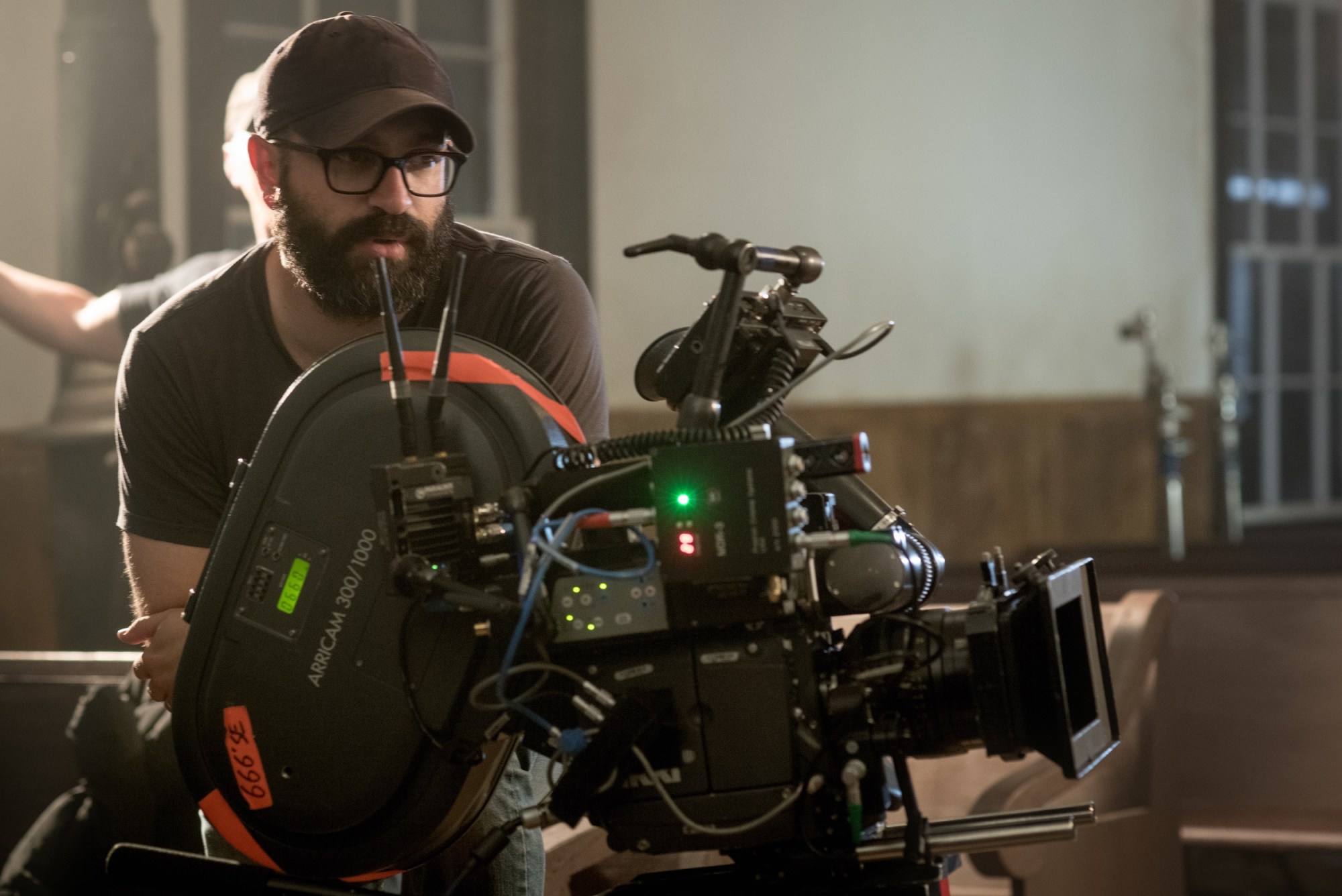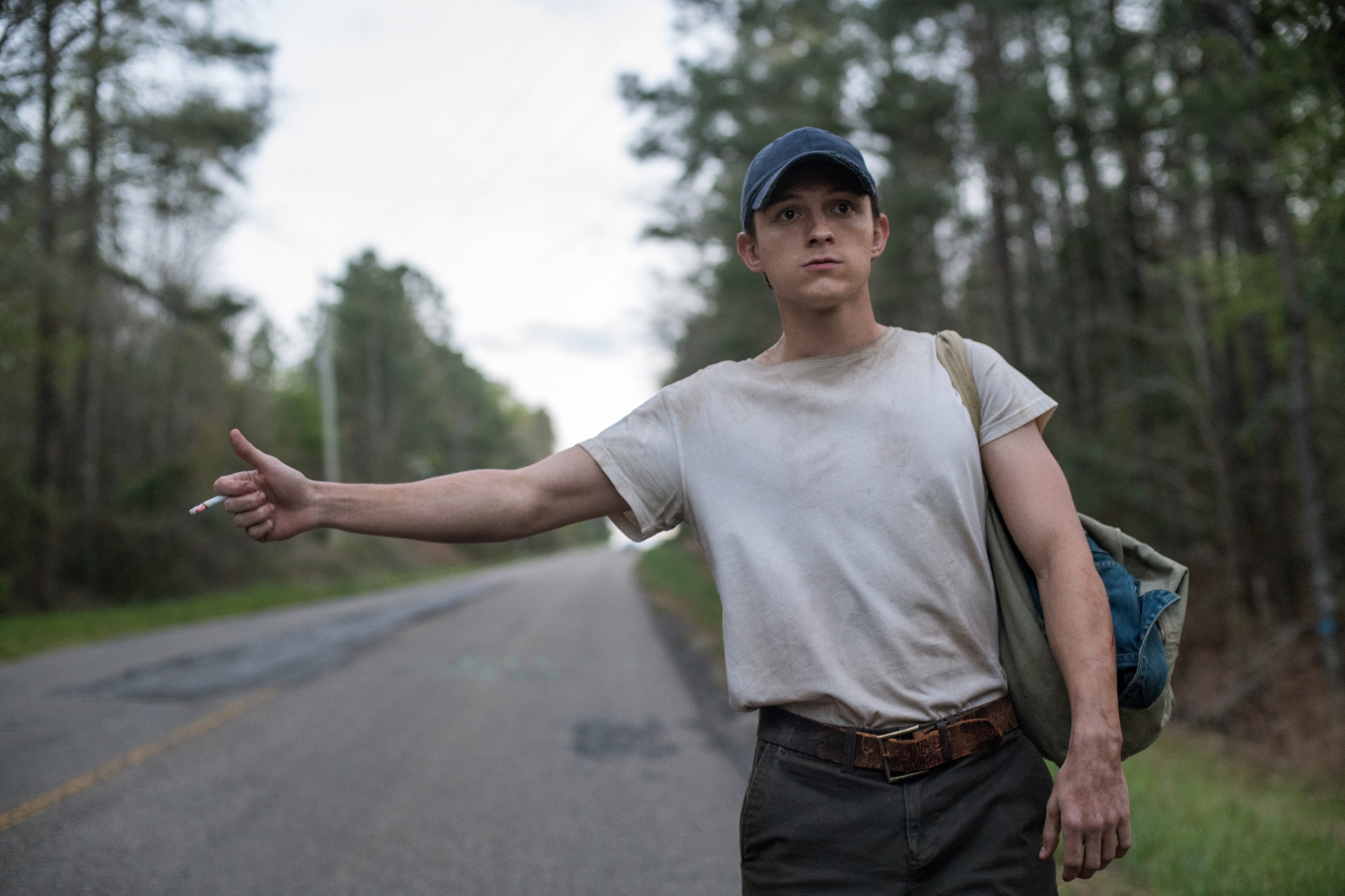
- Interviews
Antonio Campos: ‘Working with actors is my favorite part’
The Devil All the Time, an adaptation of the novel by Donald Ray Pollock that premieres this week in Netflix with a cast that includes Tom Holland, Robert Pattinson, Bill Skarsgård, Haley Bennett, Riley Keough, Sebastian Stan, Jason Clarke, and Mia Wasikowska, among many others. From his first feature film, Simon Killer, which debuted at Sundance in 2012, and Christine, which premiered at the same festival in 2016. Antonio, who also directed several episodes of The Sinner, is the son of famed Brazilian journalist Lucas Mendes Campos and an Italian-American producer and as he explains to us in this interview, the freedom he enjoyed at home may have been the reason he dares to explore in themes that others fear.
font-family:"Times New Roman",serif;mso-bidi-font-family:Arial’ lang=’EN’>Why did you want to adapt Donald Ray Pollock’s novel?
It starts off with that scene where Williard beats up the poachers and teaches his son this lesson about ‘there’s no good sons of bitches out there’. And I remember how that scene grabbed me. But the thing as I read the book that started to really pull me in and excite me, was that the book was the hybrid of two of my favorite genres, Southern Gothic and Hard-Boiled Fiction. And somehow Don Pollock had figured out how to create a story that captured all my favorite elements from those genres. Besides that, thematically this generational story that was sort of a spine of the book, about the trauma that the father goes through but then is passed down to son and so much of that tied to religion and faith and faith in violence, I found to be something that I wanted to tell, something that I wanted to explore, something I had been exploring in other projects. It just grabbed me right away.
font-family:"Times New Roman",serif;mso-bidi-font-family:Arial’ lang=’EN’>And it also gave you the opportunity to work with great actors, which is something that you really enjoy, I think. Is that correct?
So to me it’s very important as a director it’s not for them to learn my language, but more for me to learn their language and try to communicate with them in a way that speaks to them. Sometimes it’s not even words, sometimes you are saying this is the rhythm of the scene or this is the rhythm of the character. And then to also know when to not say anything, which I think is something as a young director you don’t always know and then you learn as you make more movies, sometimes it’s about not saying anything and letting the actor get to the thing naturally because you know they are going to get there. For me, this book was filled with amazing characters. And I knew that if I made this very strange universe with wonderful actors, some of who you recognized, that you would feel familiar in a place that was so unfamiliar. And then you would sort of settle into this very wild ride that the movie is.
font-family:"Times New Roman",serif;mso-bidi-font-family:Arial’ lang=’EN’>Do you want the audience to recognize these actors?
I wanted to cast people that were amazing actors that you might know, actors that are amazing that you might have not seen as often, and then completely unknowns, some non-actors. I like working in that world where you are kind of blending these sorts of levels of recognizability. I don’t mind if you recognize someone, to me, it’s a familiarity, a comfort. And so then to settle into a very different character, in a very different world than you have seen them in, is the fun.

Tom Holland in a scene from The Devil All The Time.
glen wilson/netflix
font-family:"Times New Roman",serif;mso-bidi-font-family:Arial’ lang=’EN’>You were dealing with some very dark themes in the film. How was the mood on the set?
Whenever I have made movies, they are heavy dramas and there is deep psychological work that goes into them. But in between you need to find a respite, you need to laugh and you need to be warm. Not always – sometimes you want to maintain that sort of tension the whole day, but a lot of times you are like, let’s just talk about whatever, let’s look at something on YouTube, let’s do something else and then let’s get back into it. But I feel like that’s the mood that you want on any set.
font-family:"Times New Roman",serif;mso-bidi-font-family:Arial’ lang=’EN’>It seems that you are very interested in the complexities of the human mind because you have been doing movies about complicated stories that sometimes are real, like Christine, thatfont-family:"Times New Roman",serif;mso-bidi-font-family:Arial’ lang=’EN’> was based on a real story. What drives you to tell these stories?
And sometimes I can’t. But that’s part of the journey, is to dig deep and go into the corners and the crevices of their mind and see what’s there and try and find that room where they have kept their humanity locked up for a little while. But yeah, I think I’ve always been fascinated by these complex characters and try to understand why they do the things they do. Because I don’t think that people that do bad things are thinking they are doing a bad thing if they do it, and I think that’s an interesting place to start off, to think well someone is doing bad because they know that they are doing bad as they do it and what do they think and what is driving them to do that and what have they learned as they have grown up, that might have informed the way they behave? So I think it’s endlessly fascinating. And again, I do always hope at the end of the exploration into these characters that you find the good somewhere, and that you can maybe come out of the other side. With Arvin at the end, to me it’s an optimistic ending, it’s not one that is flat out unhappy. It’s not a bold, clearly happy ending, but it’s one with the potential for a happy ending and a new beginning.
font-family:"Times New Roman",serif;mso-bidi-font-family:Arial’ lang=’EN’>Even if we will watch The Devil All the Time in our living rooms, it has a cinematic quality. Was that the goal?
That’s part of what cinema is. The frame is always telling a story, even if it’s someone just standing there and talking. And I think that so much of what happens in television is that it becomes just kind of like hitting the beats, like let’s hit the beats, let’s keep moving, and you don’t get the time to enjoy the world that you are being brought into. And so that to me is what cinema is and I think so much good television does that too, that it allows you to really be transported into a place. That’s cinema to me, is being transported to another place, to have an experience that is very far from where you are sitting, in a theater or on your couch.
font-family:"Times New Roman",serif;mso-bidi-font-family:Arial’ lang=’EN’>I found an interview that you did in Cannes when you were a teenager. I was surprised how determined you were at that age that this is what you wanted to do. How long has this dream of being a director been with you?
And I had a kind of obsession with watching movies and watching them over and over again. And then around 12 or 13, I saw A Clockwork Orange. And that was where I realized what a director was, it was like whatever this guy did, I don’t know why I knew it, but when the card came up and it said “Produced, Written and Directed By Stanley Kubrick,” I said wow, I want to do what that guy did. I feel like he was telling the story with the picture, with the sound, with the dialogue, with the actors, that it was all this one wonderful thing that came from this one person’s mind. And I wanted to learn what that was and I became obsessed at that time to try and make a movie. And I made my first movie when I was 13. Since then, which was 24 years ago, it’s been the only thing that I’ve ever wanted to do. And I feel like in some ways I’ve tried to get back to that 13-year-old boy who made that first movie that was called Puberty, which is about a boy going through puberty. (laughs) And just the rawness of that experience and the excitement and the intimacy that I had with all of my crew and my actors. And so even today when I am working with a big crew, I still want to feel like I am working with three or four people, even if there are 50 or 60 people. To me, it’s just this wonderful thing of creating something with a group of people and everybody trying to communicate your vision to everyone else and build something together. And the communal experience of filmmaking is also what is so wonderful about seeing a film in a theater.
font-family:"Times New Roman",serif;mso-bidi-font-family:Arial’ lang=’EN’>How much did the freedom that you mentioned in one interview about growing up in a Brazilian house in New York led to your development of the artist that you are today?
Because there was nothing off-limits at the dinner table. For better or worse, we could talk about anything. My father is Brazilian and my mother is Italian-American but she speaks fluent Portuguese, she lived in Brazil, and there is a Mediterranean kind of quality to it as well. And I think there never was anything that was taboo to discuss, and it was encouraged too. My father is a journalist so we were encouraged to question, we were encouraged to know everything that we could know about a subject and if we were going to tell a story we needed to be able to tell the whole story. My father was very annoyed if he couldn’t answer certain questions. So all of that was so important in imbuing me with the courage and the confidence to maybe go to places that weren’t so popular, to try and say things in a way that was personal. Also, there was a love of cinema in my house and connecting to movies, it was kind of like ‘do it, that will be the best thing you can do.’ And to feel that at a young age (this) was instilled in me and that was key.

